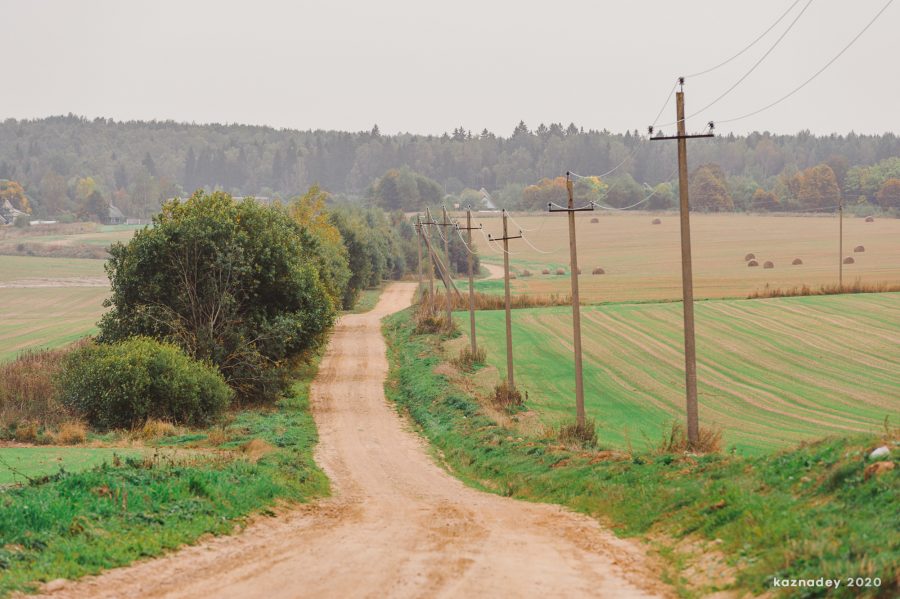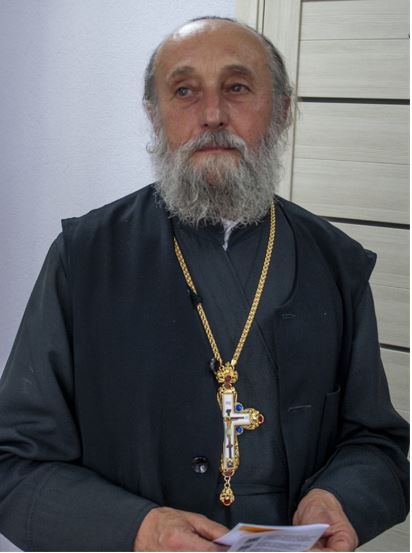On September 4, in Ivenets village, on the territory of the church of St. Euphrosyne of Polotsk, the presentation and official opening of the walking ecological path «The Way of Silence» took place. Its is one of the projects of Church and Environment program in Belarus, aimed to support religious communities in working with environmental issues.

The Way of Silence is a route where nature and history, people and cultural monuments created by them are harmoniously mixed. Here you can get acquainted with the history of Western and Central Belarus, see the preserved and disappearing architectural heritage. The Way of Silence is also a real opportunity to take a break from the noise of big cities, to be in nature alone or with relatives and loved ones! The Way of Silence consists of the Northern (through the forests) and the Southern (through the villages) routes, each of them is about 40 km long.

On the Way of Silence you can get acquainted with the history of Western and Central Belarus, see preserved and disappearing monuments of architecture.


And besides this, the Way of Silence is an opportunity to take a break from the sounds and noise of big cities, to be in silence alone with nature, with yourself or with your family and loved ones!


On the initiative of the rector of the church in Ivenets, Archpriest Viktor Peregudov, the opening took place on the eve of the day of prayer for God’s creation and simultaneously with the opening of the VI International artistic plein air “Holy Land of Belarus” dedicated to the memory of Metropolitan Filaret (Vakhromeev). A special information stand was installed near the church, describing the Way of Silence.
On the opening ceremony the Metropolitan of Minsk and Zaslavl Benjamin was also present and blessed beginning of a good deed.

Father Viktor Peregudov, rector of the church of St. Euphrosyne of Polotsk in Ivenets, supported the idea of creation of the route and shared his opinion: “It is so common in Europe to walk on ecological trails. I’ve been to Sweden, I’ve seen young families there, older people. I think we have only the beginning. And I’m happy that guys realized what an important perspective this is. We still do not understand the potential inherent in the Way of Silence! There a person can be alone with his soul in contemplation — and this is in great short supply today. Seeing a beautiful creation, people look for its Creator. and the Creator is God. That is why we have timed the plein air of artists to the day of prayer for God’s creation, so that artists who carry beauty will also join God’s beauty. I hope that through the «Way of Silence» even more people will join the beauty, and through the beauty join God».

According to Sergei Yushkevich, project coordinator, the very idea of creating an ecological hiking trail leading travelers from Ivenets to Rakov, arose in 2019. Then the first meetings with local priests and people took place. It took several years to coordinate organizational issues with the authorities of the three districts through which the Way of Silence passes, to fully mark the trail with signs, badges, and informational stands; create a web-site www.silent-way.by with detailed information about the project, with maps and photos; to collect memories of the native places of the locals; record an audio guide. Even original passports where it will be possible to put seals-marks that the traveler visited the concrete settlement are developed.

The creation of the route took place within the framework of the activities of the Working Group on Cooperation between the Belarusian Orthodox Church and the Ministry of Natural Resources and Environmental Protection of the Republic of Belarus, which includes clergy and laity involved in environmental projects. The project was funded by the Netherlands’ Fund for Regional Partnership – MATRA and Coalition Clean Baltic.
In addition to all that has been said, the Way of Silence has many useful functions and capabilities, because here you can:
— see the preserved monuments of architecture — temples and estates of famous landowners;
— get acquainted with the history of Western and Central Belarus;
— through information stands to gain wider knowledge about the flora and fauna of the region;
— to take part in maintaining the life of the villages, because the appearance of travelers will revive them, help them not to disappear, but to develop;
— through the informational stands dedicated to church and environment issues located near the temples, to get acquainted with the Christian attitude to nature.

